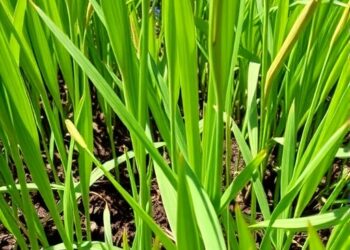Sticks and stones aren’t enough to thwart biological attraction, but sometimes those are the only tools available to pastoralists trying to prevent wildlife from eloping with their livestock.
Sticks and stones aren’t enough to thwart biological attraction, but sometimes those are the only tools available to pastoralists trying to prevent wildlife from eloping with their livestock.
A new study led by Colorado State University brings awareness to both the human impacts of these encounters – ranging from economic loss to death – and conservation concerns for the wild animals that are often endangered.
Conserving threatened and endangered species is a globally recognized priority, but justice and equity for the marginalized pastoralist populations around the world who experience conflict with these species are often overlooked, according to the study’s authors. Many pastoralists are Indigenous people with only sticks and stones as defense against aggressive wild males trying to usurp domestic females – either by lobbing them at wild intruders or building stone walls to contain livestock.
“Can you imagine being on a treeless plain with an angry, 2,000-pound, testosterone-crazed, giant wild camel or wild yak barreling down on you and with stones as your only weapon?” said lead author Joel Berger, a professor in CSU’s Warner College of Natural Resources and senior scientist with the Wildlife Conservation Society. “Not much safety there.”
Pastoralists who tangle with wildlife might lose livestock and income or suffer injury or death. However, when wildlife clashes with livestock keepers, wildlife usually loses.
Flirting with disaster
Wild males that interfere with herders by attempting to court domestic females are sometimes killed out of retaliation, said co-author Naresh Kusi, the country program director at Himalayan Wolves Project. Kusi leads wild yak research for the program in Nepal, where the animal was once thought extinct. His team rediscovered the wild yak there in 2014.
Endangered wild yaks, wild camels, elephants, banteng and gaur (the latter two are Southeast Asian cattle) clash with pastoralists while looking for mates. Bison, wild sheep, ibex and guanacos (a llama-like wild camel in South America) also seek to procreate with domestic relatives, sometimes to their peril.
Before judging these frisky, four-legged Casanovas, understand that their mating pool is limited. For some of these native species, less than 1% exist in the wild.
Wild ancestors to domesticated stock are displaced as their habitat shrinks – sometimes due to the expansion of livestock grazing lands. In places where livestock owners have guns, wild relatives have been killed to prevent intermingling. Such was the fate of many reindeer.
Reining in reindeer
Reindeer and caribou – biologically the same species with different names based on geography – live in the northern reaches of the globe in wild, feral, free-ranging and domestic forms. Wild reindeer numbers have declined dramatically, with some subspecies listed as endangered, mostly due to habitat loss.
According to the study, domestic Eurasian reindeer were introduced into western Alaska in the 1890s to offer an additional source of food and fiber for local Inupiat, Indigenous people native to northern Alaska. Wild male reindeer lured away domestic females for breeding. Herders in northern Europe and Asia experienced similar conflict, but wild interlopers were kept in check on all three continents through lethal means, to the benefit of herders and to the detriment of biodiversity.
Introgression vs. genetic purity
Hybridization and disease spread between wild ancestors and domestic descendants is a global issue affecting conservation and pastoral livelihoods – even in the United States, where bison and bighorn sheep can become susceptible to disease when exposed to domestic partners or vice versa.
Herders sometimes favor hybridization because genes from wild progenitors are thought to enhance the hardiness of domestic stock. However, conservationists worry about the reduction in the genetic purity of wild species.
“From the perspective of genetic diversity, hybridization poses a potential threat to the wild ancestors because continuous introgression with the domestic relatives may gradually erode the genetic integrity of the wild forms, leading to the dilution of the wild gene pool over time,” Kusi said.
Widespread human-wildlife conflict
The intermingling of wild animals and livestock may challenge only a small segment of the global human population, but it affects pastoralists on nearly every continent – Africa, Asia, Europe, Australia and the Americas.
While the issue is geographically widespread, solutions must be locally specific and consider community perspectives, the authors said. To reduce human-wildlife conflict, herders, conservationists and government officials all must come together to develop culturally conscious best practices and solutions, they wrote.
“There is much value to existence, even for places humans will not visit and for species they might not ever see,” Berger said. “Giving a voice and recognition to the problems can improve conservation needs for both people and endangered species.”
Journal
Global Ecology and Conservation
Article Title
Meeting your ancestors – Sticks, stones, and discord in Earth’s outposts
Article Publication Date
24-Apr-2024




